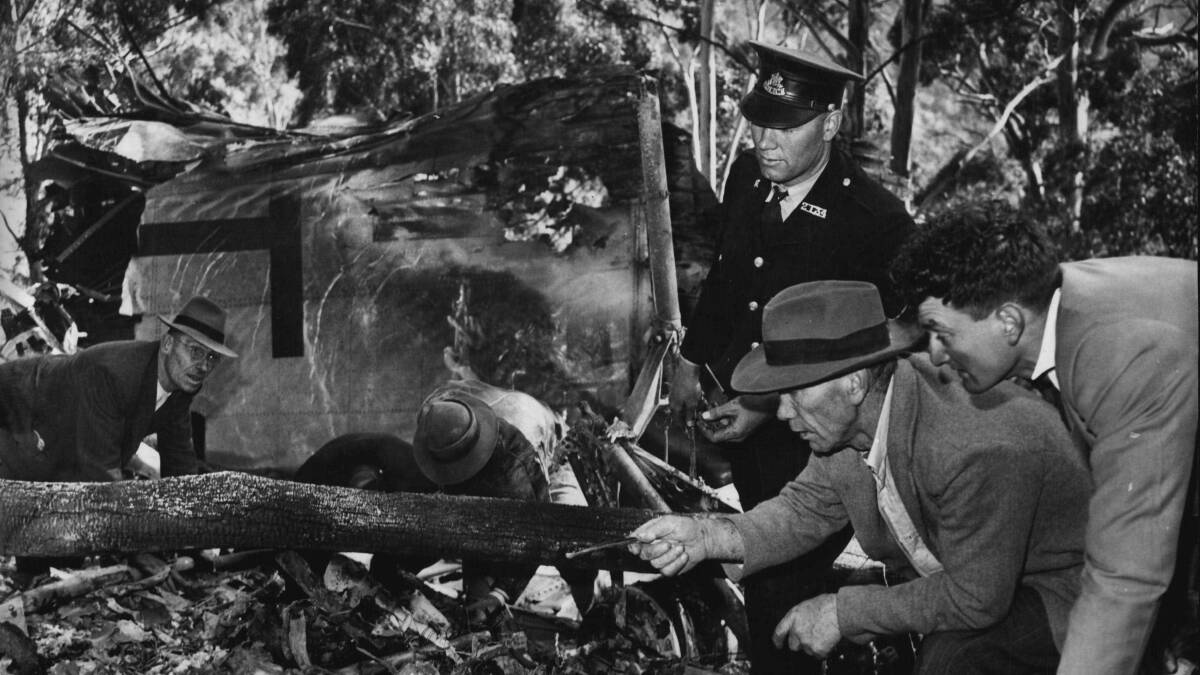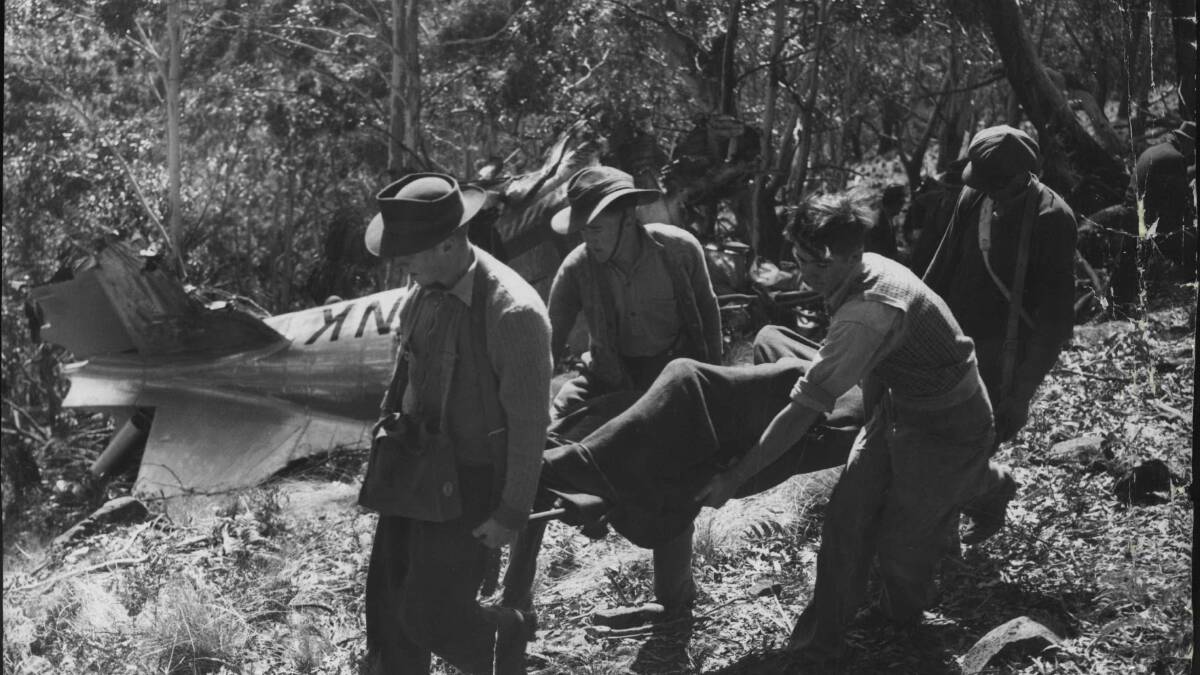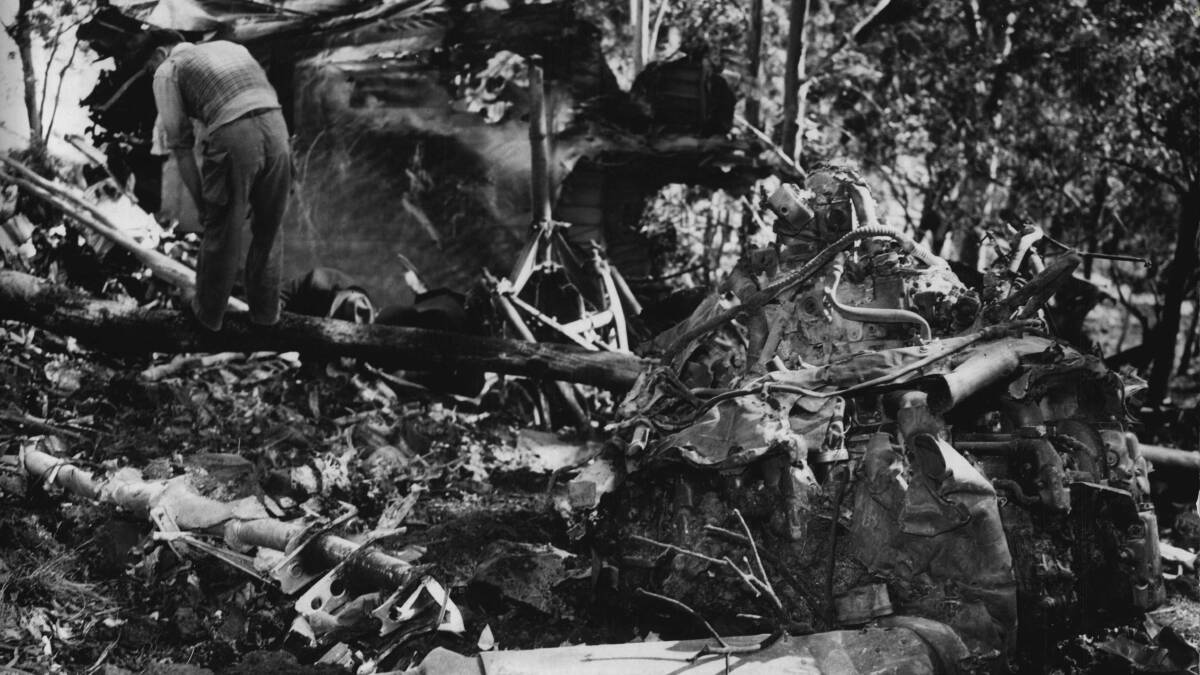
Three watches found among the belongings of the crash victims had stopped at 8.15pm, 8.16pm and 8.27pm. Of the thirteen dead most were burnt beyond recognition. There were no survivors.
Subscribe now for unlimited access.
or signup to continue reading
The fatal flight of the the Lutana, which ended when the Australian National Airways DC3 airliner clipped trees on top of Square Peak before crashing into rough country in the Crawney Range about 16 miles from Nundle, took the lives of 10 passengers and three crew members.

The tragic incident has remained shrouded in mystery. How the scheduled flight from Brisbane to Kingsford Smith Airport in Sydney, captained by the highly experienced pilot JA Drummond crashed into hills near Nundle, hundreds of miles off course and flying at a dangerously low altitude has been the source of much conjecture and the subject of an official inquiry.
Investigations into the systems that failed the passengers aboard the Lutana would later lead to more stringent safety regulations being enforced by national air authorities, but the findings of the inquiry into the fate of the Lutana would be forever inconclusive.

The disaster occurred on a Thursday night and according to the Quirindi Advocate (Sept 7,1948), police and ambulance parties reached the scene of the crash on the Saturday night and on the following morning began the task of recovering the bodies “from the mass of twisted and burnt-out wreckage high on the side of a steep valley.”
The Advocate reported that the police and several civilians who recovered the bodies had a difficult task cutting away the wreck from around several of the bodies and took nearly four hours.
The Northern Daily Leader (Sept 6, 1948) reported that the search party put itself in grave danger as it negotiated the treacherous terrain and serious falls were only narrowly avoided.
Experts from the Department of Civil Aviation were quickly on the scene to conduct a departmental investigation.
It was revealed that circumstance and a number of faults conspired against the Lutana.
When the plane left Brisbane in good weather it was found it did not possess a serviceable auto pilot, a device that would have made it easier for pilot Drummond to establish his true position when his plane hit heavy weather en route to Sydney.
Possibly in an attempt to avoid electrical storms the Lutana diverted inland, but for reasons unknown it maintained a westerly course drifting further and further inland.
There was no question of the experience of the crew. Drummond and his First Officer Atkinson were former RAAF pilots of considerable experience.
There was no question of the experience of the crew. Drummond and his First Officer Atkinson were former RAAF pilots of considerable experience.
The inquiry believed that the Lutana could not have flown the track it did unless its crew was mislead by at least two of their navigational aids.
The inquiry heard evidence that an intermittent fault in the Kempsey radio range transmitter caused it to signal “on course” in all directions. The inquiry was also of the opinion that the magnetic compass on board was not functioning effectively, and had been discarded by the crew, possibly the consequence of a lightning strike.
Nevertheless the Lutana had drifted a long way from its designated course, and the evidence suggests that the crew were unaware of their real position and consequently were giving their position incorrectly to Kingsford Smith Airport.
The plane was heard by a woman on a station property some 20 miles out of Armidale, apparently flying high, but still heading south west.
Then the mystery deepens. Drummond turns his aircraft sharply back towards the east, as if realising where he is and getting back on a Sydney-bound course, but then inexplicably he begins a fatal communication with Sydney Approach Control reporting the Lutana was in cloud at 6000 feet and asking permission to descend to 4000 feet. He was flying into mountains well over that height.
Around 8pm in the Quirindi district there were widespread reports of hearing a low-flying aircraft. Evidence from a number of people indicated that the aircraft turned from its south-westerly heading, circled around, and took up an easterly heading.
The wreckage was sighted two days later by an East-West pilot en route to Sydney.
Following the Lutana disaster, the findings of the inquiry were released on November 17 1948 and led to a major shakeup of the department’s air traffic control system.
Among the deceased was 62-year-old Margaret McIntyre of Launceston, the first woman to be elected to the Tasmanian parliament and one of the best known women in Australia.
The Canberra Times reported that a wreath, shaped like a DC3 aircraft was placed on the grave of four victims of the Lutana air disaster at a common burial at West Tamworth.
There does remain some mystery surrounding the final resting place of some of the victims as the exact site of the grave is unknown, and it is clear that Captain Drummond was buried in a separate location.
On Sunday September 2, a citizen group from Nundle and Tamworth have organised a Commemoration Ceremony in honour of the 70th anniversary of the crash of the Lutana in 1948.
It will be held at Tamworth Cemetery from 10.30am. Organisers are expecting between 13 and 20 next generation family members to attend.
The plaque was purchased by funding made available by Tamworth Council and the NSW Government.

